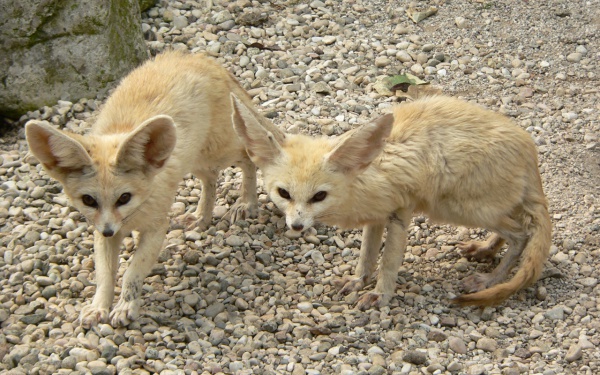Facts About Fennec fox
The fennec fox is a small, nocturnal fox native to the Sahara Desert and the Sinai Peninsula. It is easily identified by its large ears, which assist in thermoregulation in the hot desert climate, along with its specialized coat and kidneys that conserve water. These adaptations enable the fennec fox to endure extreme conditions where temperatures soar and water is scarce.
Their diet primarily consists of insects, small mammals, and birds. In the wild, they can live up to around 10 years, but in captivity, their lifespan can extend to 14 years. Predators such as Verreaux's eagle-owl and jackals pose significant threats to them.
Fennec foxes are social animals that live in family groups and dig burrows in sandy areas for shelter. Despite being hunted for their fur by some indigenous peoples, they are not currently at risk of extinction. Though there is some debate about their classification, they are generally placed in the genus Vulpes.
These foxes have straw-colored fur, a black nose, and long ears with reddish stripes. They are the smallest members of the canid family, with slight size and weight differences between males and females. They inhabit the Sahara, living in sand dunes and sparsely vegetated areas.
Fennec foxes are known for their digging behavior, creating complex dens for living and breeding, often interconnected with family members' burrows. They are omnivores, consuming a mix of animal and plant matter. Reproduction occurs once a year, with both parents involved in raising the pups.
While they face threats from being trapped for exhibitions and habitat loss due to human settlements, they are also bred as exotic pets. To prevent inbreeding, regulations are in place. Conservation efforts include protection in several countries and listing in CITES Appendix II.
Culturally, the fennec fox is significant as the national animal of Algeria and has appeared in popular media such as Disney's "Zootopia." It is also linked to Mozilla's Firefox for mobile project.

 Burkina Faso
Burkina Faso